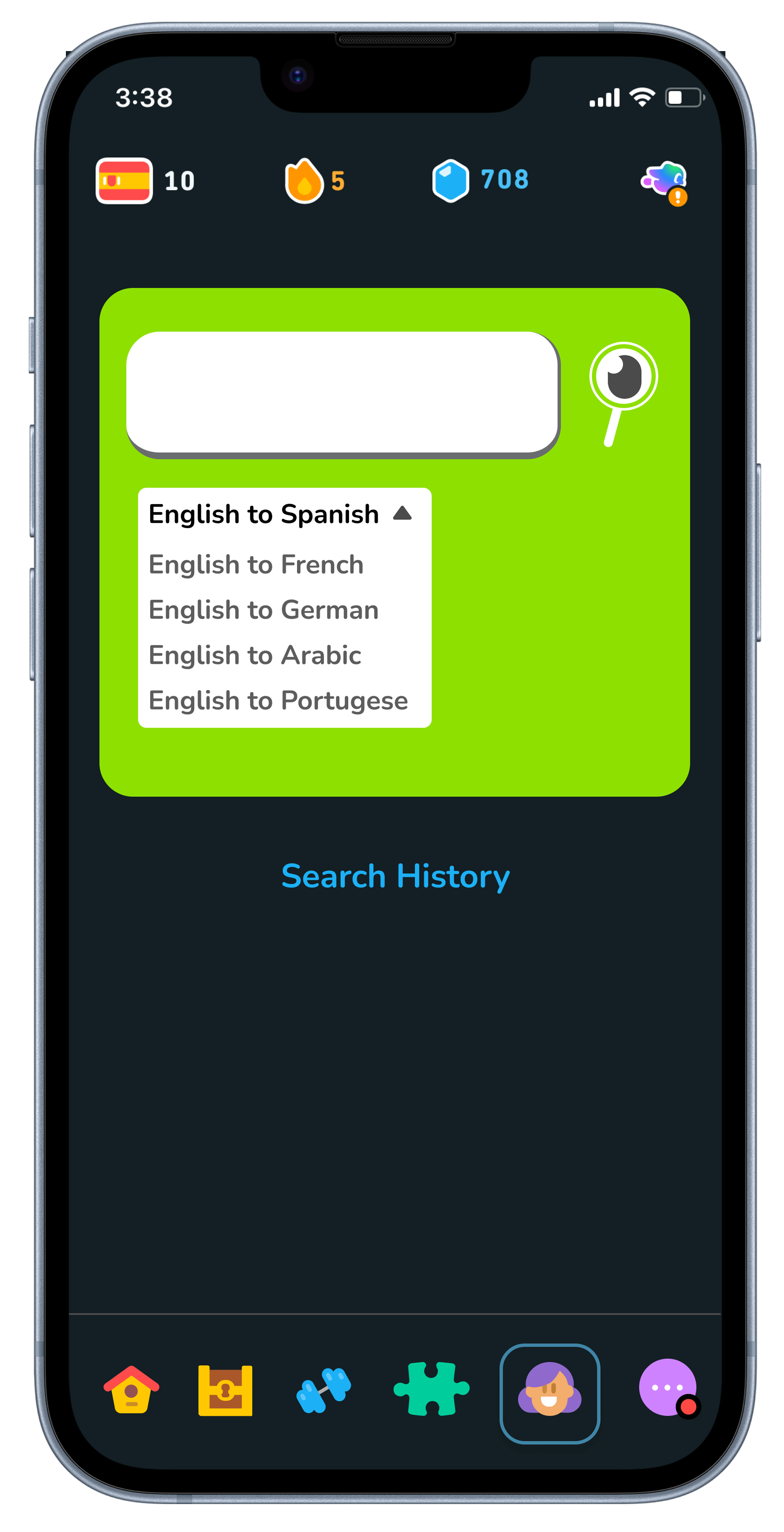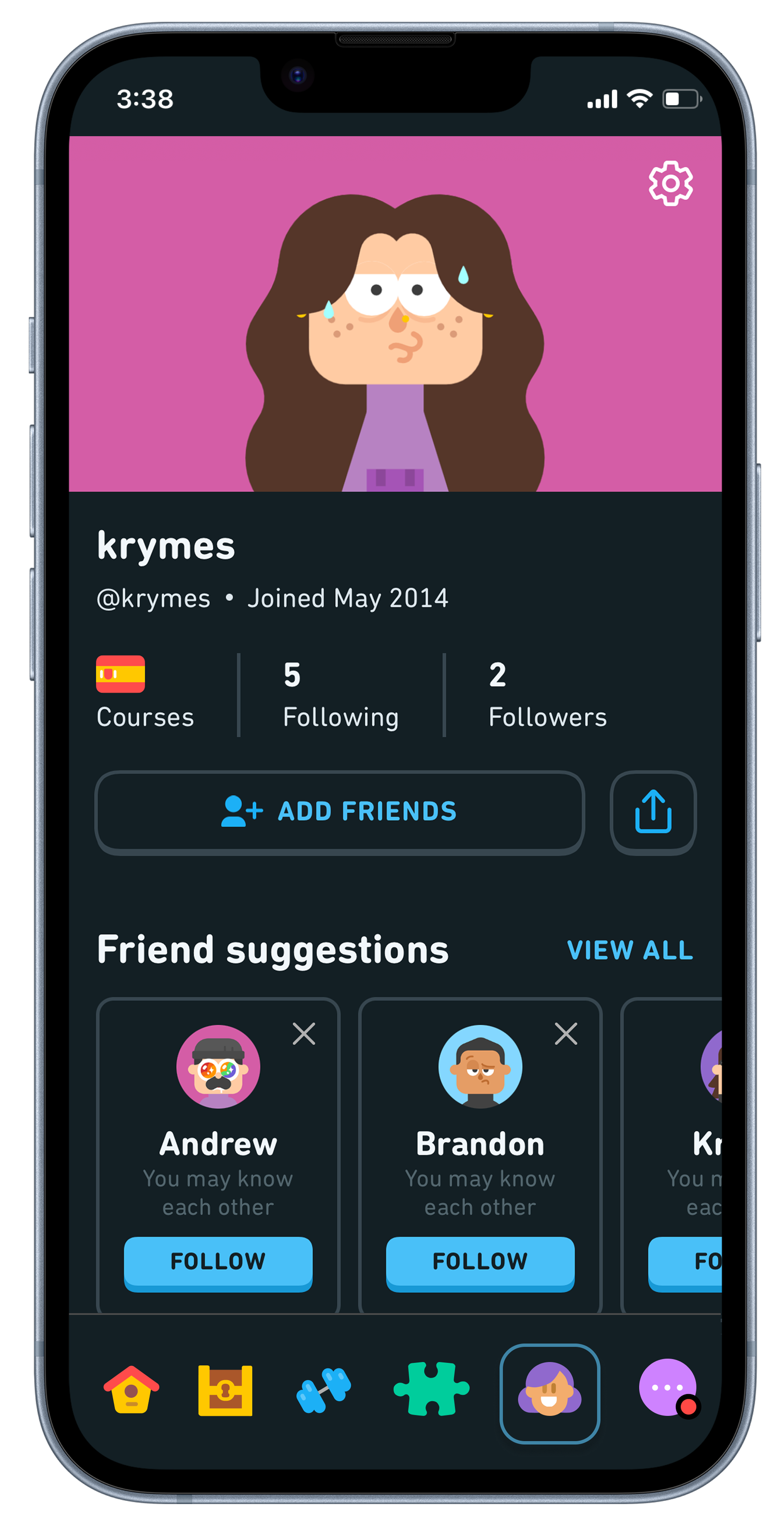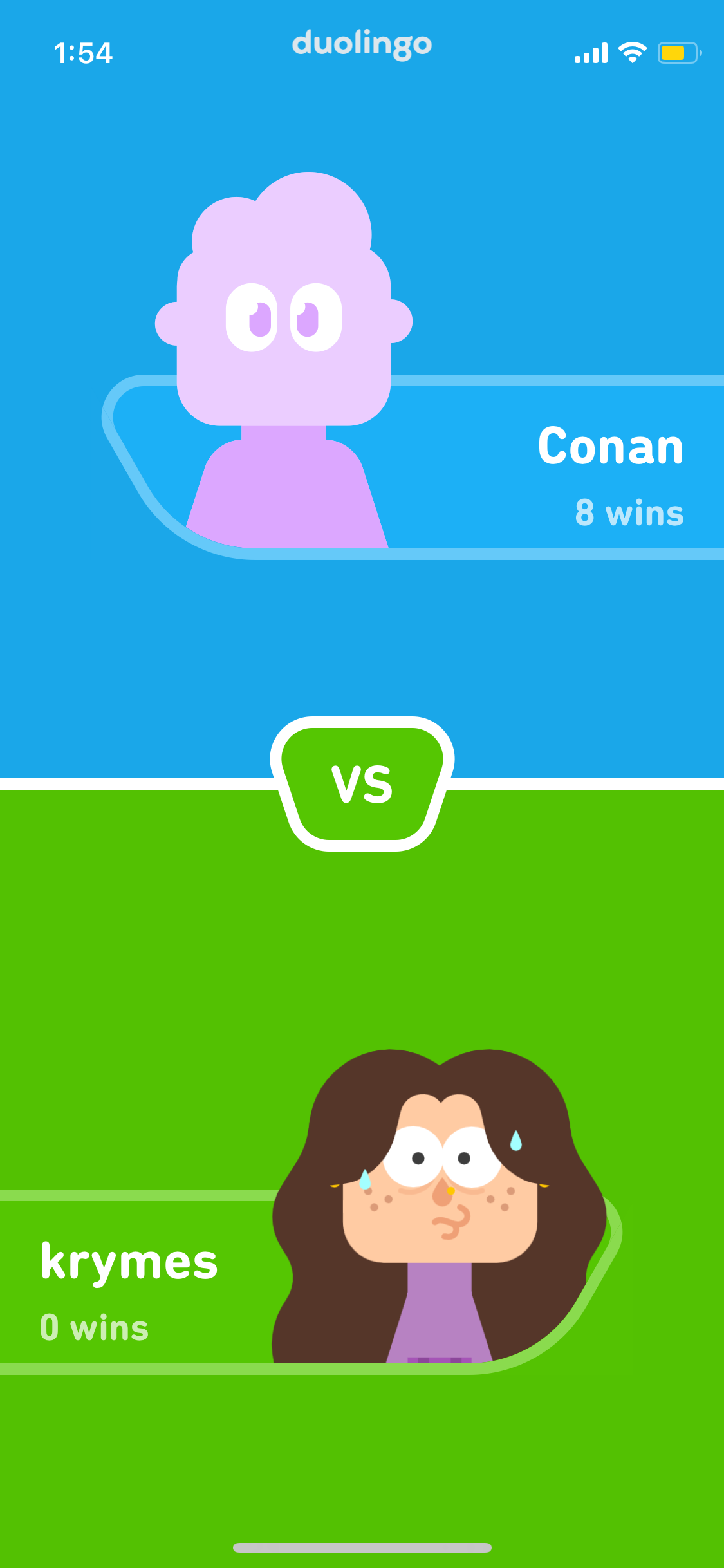Feature Add: Arcade Games for Duolingo




TLDR
What’s the problem?
There is a disproportionate amount of total users, versus active users on Duolingo, and the average session duration doesn’t result in noticeable improvement in user’s language skills. In simple english; people love duolingo but people fall of the learning track A LOT.
What’s the solution?
Use Duolingo’s users to motivate each other with some healthy competition; user to user gameplay, and an update on streak competitions.
Duration: 2 Months
Role: UX/UI
How it started
Learning a different language is a useful skill and learning as an adult has its pros and cons. Research suggests that immersion into a language/culture is the best way to really learn, however most of us can’t drop what everything and move to a different country for a few months. Duolingo relies on repetition as a method of learning, and practice arguably makes perfect. Where it fails, I believe, is making the learning experience more applicable to its individual users.
The key problem I was trying to solve, at first, was the lack of immersive learning opportunities within Duolingo. The overarching issue was the low rate of user retention.
For this case study, a competitive audit was the place to start. There are a lot of language learning resources and it’s important to know how others are solving problems, in order to make relevant solutions, and see whether there are holes in the market that need filling.
Interviews
I interviewed multiple people about their experience with language learning apps, in general, and Duolingo, specifically. Here’s what I found:
All users I interviewed began their language education in a traditional academic environment (grade school.) This seems rather universal these days; children in America are learning second languages earlier, which I would say is positive!
Everyone had at least tried Duolingo, and almost everyone had fallen off their usage of the app.
All of the users felt the app was easy to understand and navigate, but ultimately did not find long lasting results, and lost motivation.
The biggest challenge in learning a language is practicing, and immersive experiences remain the most effective way to do that. That makes product design for language learning pretty challenging! Should Duolingo tackle VR…or was this not a problem I could solve?
How its going
After all my research, I realized my solutions to immersion were outside the bounds of the iOS system, and maybe not a problem that a digital product CAN solve.
So what could I do?
I looked back at my affinity map, and again at Duolingo’s brand values.
The overarching issue was the low rate of user retention.
I decided to try and solve this a different way, that aligned with duolingo’s game-play.
Design
First I did some wireframes in my sketchbook.
I worked in the Mid to High-fidelity stage for the majority of this process because I was working within Duolingo’s brand guidelines.
My features included:
Add a dictionary widget
Games available to play against others in real time
Expanding streaks to more specific progress, like vocab or minutes learned.
User Flow: look up word using translation widget
User Flow: invite friend to play Vocab Racing
User Flow: invite friend to Minutes Learned Streak
While I was in the middle of this project, Duolingo launched a game where you try to define as many words as possible under a ticking clock, and you can compete with someone else.
Sound familiar?
This is actually great news, that duolingo’s solution was similar to mine, as it validates my work. There is a difference as well, which is that Duolingo doesn’t have two people playing against each other, in real time, at the same time. Two player games ensure two users are practices. Duolingo only ensures one.
Testing
What’s tasks were tested?
Invite another user to play Vocab Bingo and then play game
Using the control center (iOS only) widget, open the search to translate tool in Duolingo
Inviting friend to a vocab, minutes learned, or regular streak
How did users respond?
All users found the tasks simple to understand and the actions easy to locate based on duolingo navigation bar. Users expressed it would be fun to play against a friend or another user online. Users expressed being able to quickly search a word is useful, and enjoyed the widget design very much.
What’s Next?
Possible next steps would be to find more use cases for the translate widget. Can it sit withing imessaging? Can you make it a web browser plugin?
An updated Streak Overview Page that includes the vocab and minutes learned streaks. Check back soon.
















